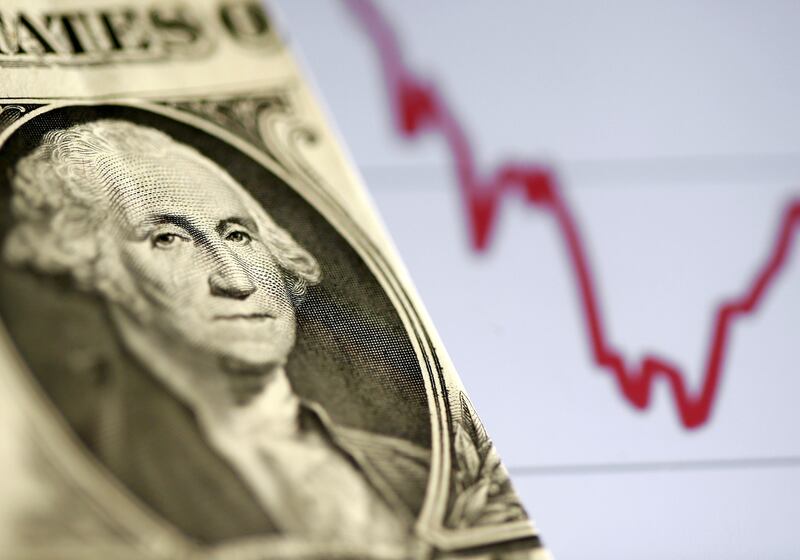The US dollar is expected to remain well supported in the first half of 2022 but the outlook for the rest of the year will depend on whether central banks focus on inflation and begin policy normalisation, according to Emirates NBD, Dubai’s biggest lender by assets.
Policy differentials will be the main driver of currency markets this year, with the US Federal Reserve’s shift to a more hawkish stance on inflation helping to support the US dollar against other currencies, Edward Bell, senior director of market economics at Emirates NBD, said in a note on Friday.
The Fed will quicken the pace at which it is pulling back its support for a post-pandemic US economy and is expected to raise interest rates three times this year, Mr Bell said.
In an abrupt policy shift, the Fed announced in December that it will reduce its monthly bond purchases at twice the pace it previously announced and is likely to end them altogether in March. The accelerated timetable puts the Fed on a path to start raising interest rates in the first half of this year.
“The gap between the Fed and European Central Bank remains quite evident with the ECB maintaining a policy of quantitative easing this year, even as some of the more extraordinary pandemic-related stimulus is pulled back and rates are likely to be held still below zero,” Mr Bell said.
Although inflationary pressures are running hot in the eurozone, ECB officials appear to have a mixed perspective on inflation, with some holding on to the “transitory” narrative, while others have said the regulator will do whatever needs to be done to bring prices on target, Mr Bell added.
“Unless there is a dramatic shift in policy tone from the ECB in the next few months, which we don’t see as likely, we would expect to see yield differentials move in favour of the US dollar as the Fed brings an end to quantitative easing, hikes rates at least once in H1 and firms up its plans for drawing down its balance sheet,” he said.
“We are targeting a EUR/USD level of 1.12 by end of Q1 and 1.10 by Q2. In H2, we would expect to see some more policy convergence as the ECB begins to consider policy normalisation with a Q4 target of 1.13.”
Meanwhile, the Bank of England was first off the block among major developed market central banks in hiking rates, lifting the bank rate by 15 basis points at its December meeting. Rates are expected to move steadily higher in 2022, according to Emirates NBD.
Swaps markets are pricing in four interest rate hikes from the BoE by the end of 2022, it added.
“We expect to see GBP/USD appreciate, hitting 1.40 by the end of the year,” Mr Bell said.
The outlook appears brighter for commodity currency central banks, according to the note.
The Bank of Canada ended its quantitative easing programme in October and may push ahead with rate hikes this year on the back of a strong economy and rise in energy prices. The BoC is expected to raise interest rates five times by the end of this year, the lender said.







